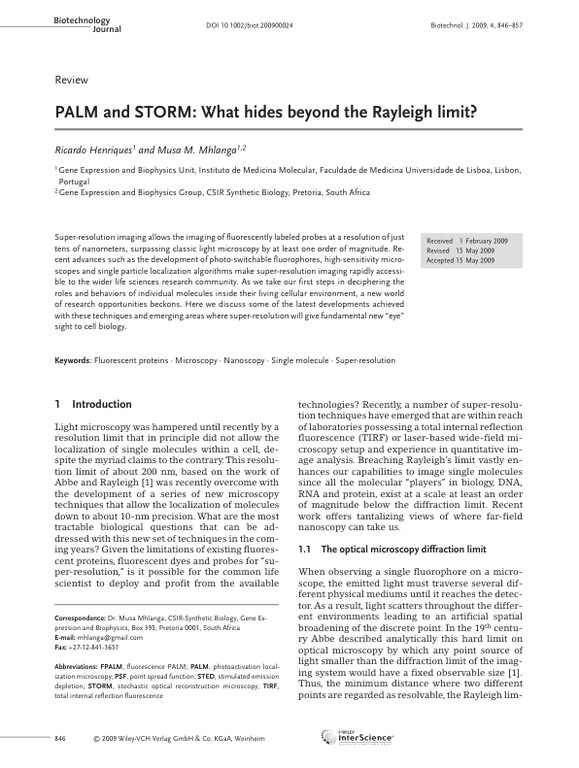PALM and STORM - what hides beyond the Rayleigh limit?
Review published in Biotechnology Journal - Healthcare Nutrition Technology, January 2009
Publisher: WILEY‐VCH Verlag Weinheim

The manuscript "PALM and STORM: What hides beyond the Rayleigh limit?" by Henriques and Mhlanga discusses the recent advancements in super-resolution microscopy, specifically focusing on photoactivatable localization microscopy (PALM) and stochastic optical reconstruction microscopy (STORM). These techniques enable nanometer-scale resolution imaging of biological structures and processes, surpassing the diffraction limit. PALM uses fluorescent proteins to label specific proteins, while STORM utilizes reversible photobleaching of conventional fluorophors. The manuscript also covers challenges and solutions in single molecule analysis and reconstruction, live-cell imaging, and extending these techniques to three dimensions. Potential applications include gene expression, host-pathogen interactions, and the spatial relationship between cellular structures. The manuscript references various advancements in super-resolution fluorescence microscopy, such as tracking kinesin movements and super-resolution by localization of quantum dots. It also touches upon the use of photochromic rhodamines and fluorescence nanoscopy by ground-state depletion and single-molecule return. Overall, the manuscript highlights the significant progress in super-resolution microscopy and its potential for high-precision structural analysis and live-cell imaging.